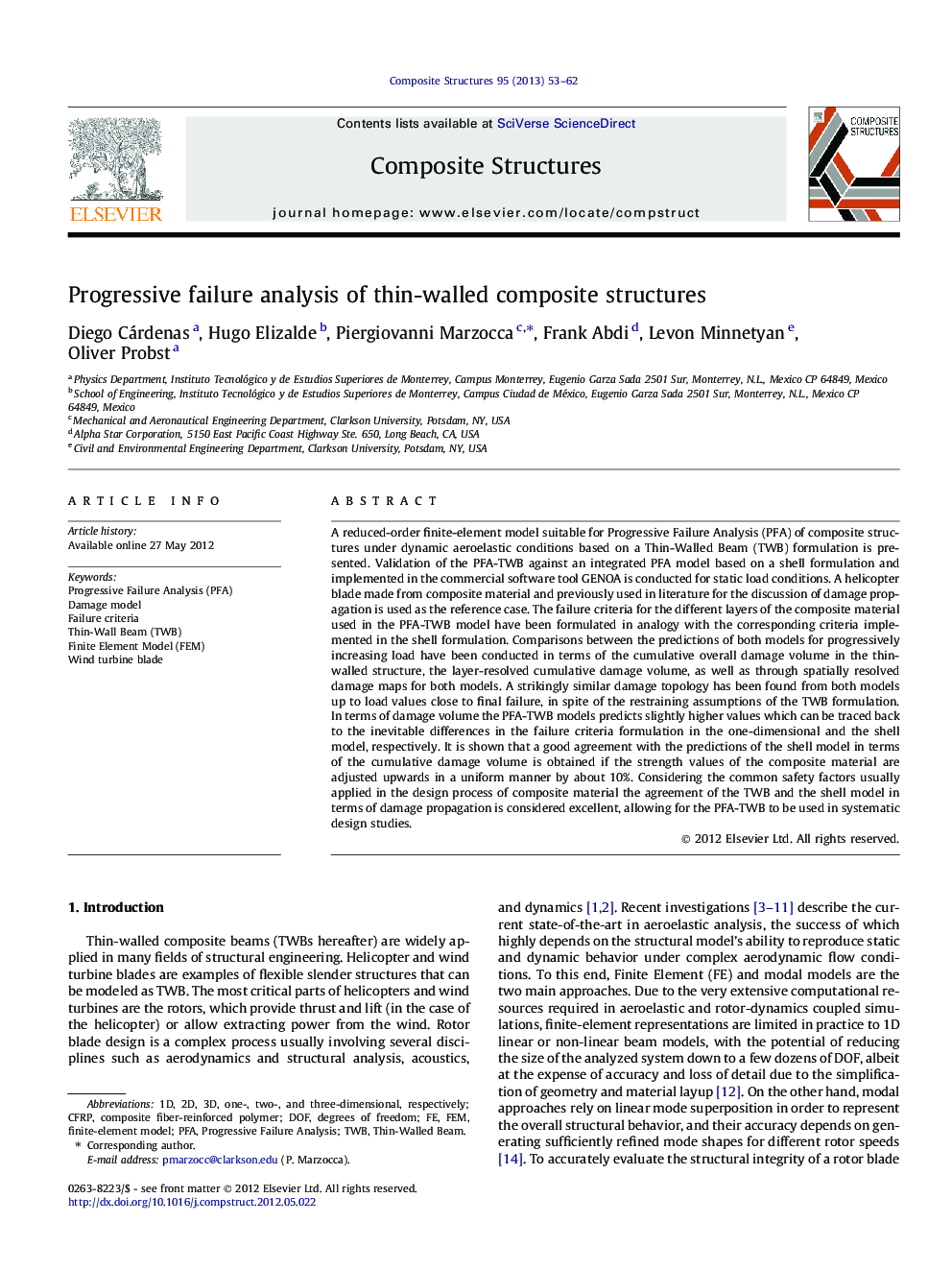| Article ID | Journal | Published Year | Pages | File Type |
|---|---|---|---|---|
| 252135 | Composite Structures | 2013 | 10 Pages |
A reduced-order finite-element model suitable for Progressive Failure Analysis (PFA) of composite structures under dynamic aeroelastic conditions based on a Thin-Walled Beam (TWB) formulation is presented. Validation of the PFA-TWB against an integrated PFA model based on a shell formulation and implemented in the commercial software tool GENOA is conducted for static load conditions. A helicopter blade made from composite material and previously used in literature for the discussion of damage propagation is used as the reference case. The failure criteria for the different layers of the composite material used in the PFA-TWB model have been formulated in analogy with the corresponding criteria implemented in the shell formulation. Comparisons between the predictions of both models for progressively increasing load have been conducted in terms of the cumulative overall damage volume in the thin-walled structure, the layer-resolved cumulative damage volume, as well as through spatially resolved damage maps for both models. A strikingly similar damage topology has been found from both models up to load values close to final failure, in spite of the restraining assumptions of the TWB formulation. In terms of damage volume the PFA-TWB models predicts slightly higher values which can be traced back to the inevitable differences in the failure criteria formulation in the one-dimensional and the shell model, respectively. It is shown that a good agreement with the predictions of the shell model in terms of the cumulative damage volume is obtained if the strength values of the composite material are adjusted upwards in a uniform manner by about 10%. Considering the common safety factors usually applied in the design process of composite material the agreement of the TWB and the shell model in terms of damage propagation is considered excellent, allowing for the PFA-TWB to be used in systematic design studies.
